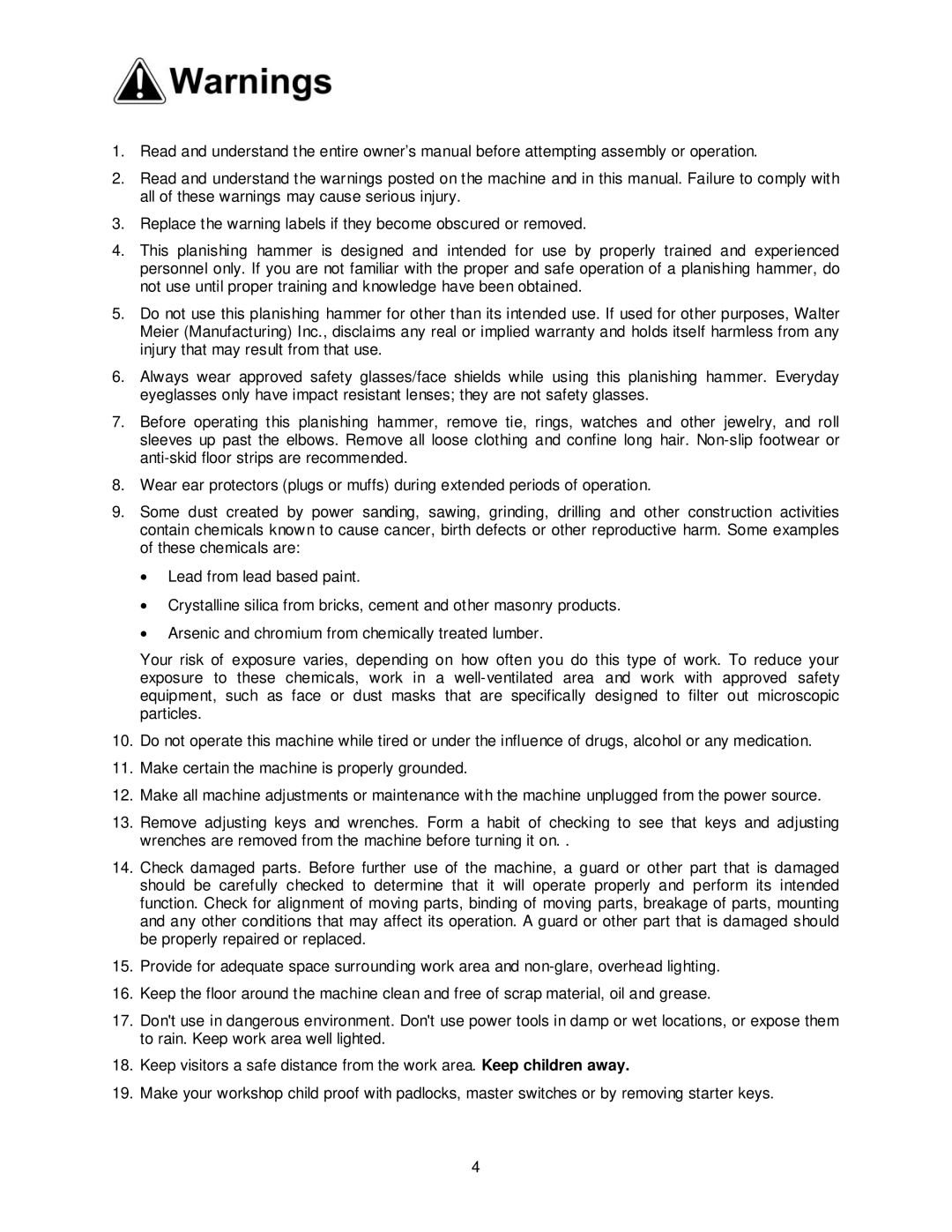PH-24T specifications
The Jet Tools PH-24T is a high-performance planer that stands out in the woodworking industry for its precision and efficiency. This powerful tool is designed for professionals and hobbyists alike, offering a range of features that make it a favorite among woodworkers seeking smooth and accurate finishes on their projects.One of the main features of the Jet Tools PH-24T is its robust 15-amp motor, which provides consistent power and durability. This motor is capable of driving the cutter head at an impressive speed of 8,000 RPM, allowing the planer to remove up to 1/8 inch of material in a single pass. This capability not only speeds up the milling process but also ensures a clean and smooth surface, reducing the need for additional sanding.
The PH-24T is equipped with a precision-ground cast iron table that is large enough to support larger workpieces, providing stability and reducing the chance of snipe during operation. This table is adjustable, allowing users to fine-tune their setup for precise cuts. The tool also features extra-long infeed and outfeed tables, which help in guiding the wood smoothly through the planer, further enhancing the quality of the finish.
Another standout aspect of the Jet Tools PH-24T is its quick-change cutter head, which allows for easy blade replacement. The blades are high-speed steel and razor-sharp, offering users a long-lasting cutting edge. The design of the cutter head facilitates efficient chip removal, minimizing clogging and ensuring a clean cut.
The integrated dust collection port can connect to a vacuum system, effectively managing chips and debris during operation. This feature not only keeps the workspace clean but also enhances visibility and safety while working.
Safety features are also prioritized in the Jet Tools PH-24T. It comes with safety guards and emergency stop switches, giving users peace of mind while operating the planer.
In summary, the Jet Tools PH-24T is an exceptional planer that blends power, precision, and safety features. Its robust motor, adjustable components, and user-friendly design make it an essential tool for anyone serious about woodworking. Whether you're flattening rough lumber or finishing pieces, the PH-24T delivers outstanding results with every use, making it a valuable addition to any workshop.
